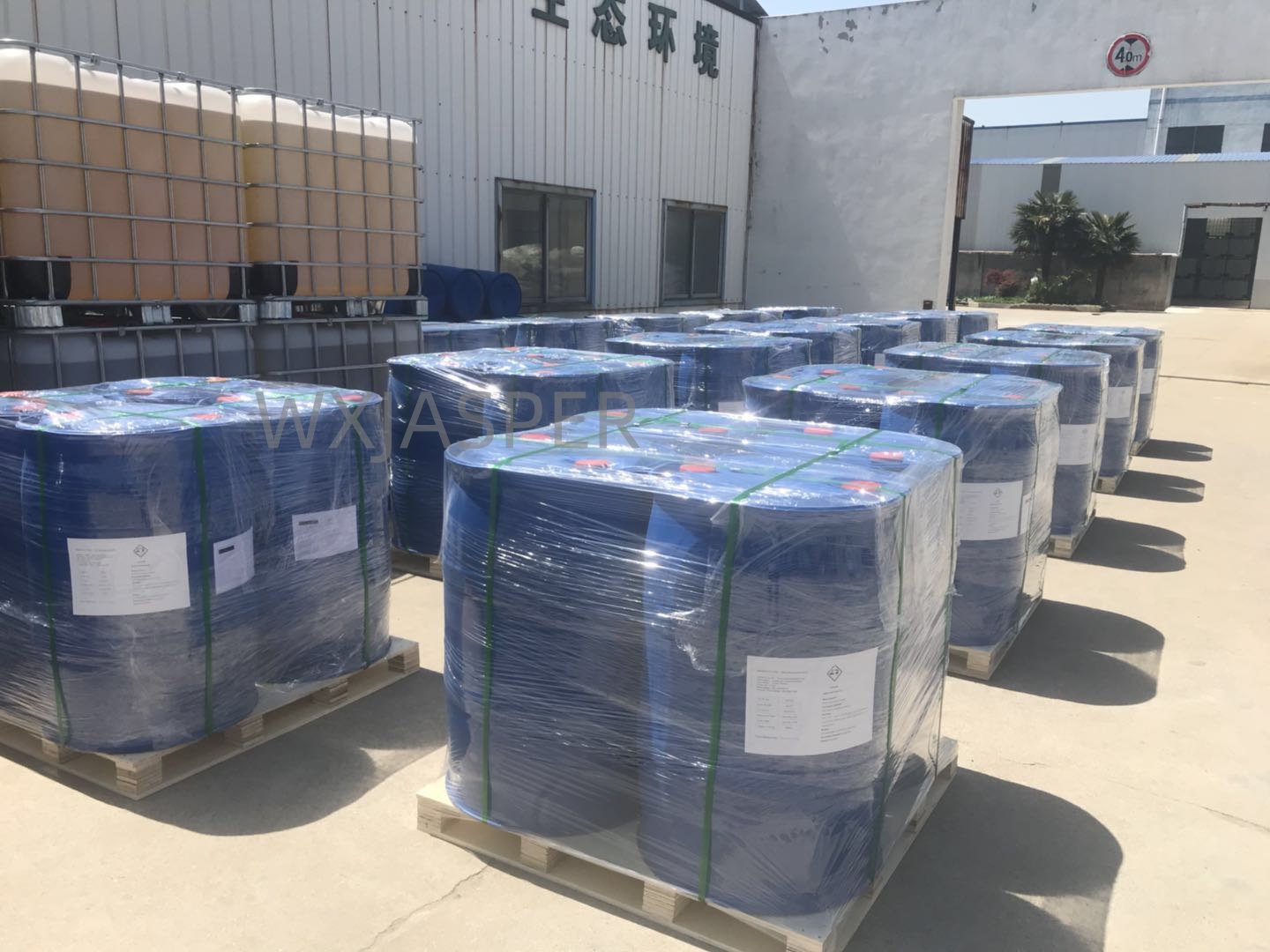Product Details
CasNo: 556-67-2
MF: C8H24O4Si4
Appearance: liquid
Delivery Time: 15 days
Packing: 200kg/drum
Purity: 99%
Product Details of Octamethylcyclotetrasiloxane (D4)
Octamethylcyclotetrasiloxane (abbreviated as D4) is a critical intermediate in the organosilicon industry, serving as a foundational raw material for the production of various silicone-based products. Below is its detailed product information:
1. Basic Information
- CAS Number: 556-67-2
- EINECS Number: 209-136-7
- Chemical Formula: C8H24O4Si4
- Molecular Weight: 296.61 g/mol
- Appearance: Colorless, transparent oily liquid
2. Physical Properties
| Property |
Specification |
| Density (25°C) |
0.9558g/cm3 |
| Melting Point |
17.6°C (solidifies slightly below this temperature, requiring insulation in cold environments) |
| Boiling Point |
175.8°C (at atmospheric pressure) |
| Refractive Index (25°C) |
1.3960–1.3970 (a key indicator for purity testing) |
| Flash Point |
60°C (closed cup; classified as a flammable liquid, requiring fire prevention measures) |
| Solubility |
Insoluble in water; miscible with most organic solvents such as ethanol, ether, benzene, and chloroform |
| Viscosity (25°C) |
~2.3 cSt (low viscosity, enabling easy mixing and processing) |
| Vapor Pressure (20°C) |
~1.33 kPa (moderate volatility, avoiding excessive loss during storage) |
3. Chemical Properties
- High Stability: Exhibits excellent thermal stability (stable at temperatures below 200°C without decomposition) and electrical insulation properties. Its molecular structure features a cyclic framework of alternating silicon (Si) and oxygen (O) atoms, with methyl groups (−CH3) attached to Si atoms—this structure contributes to its chemical inertness and resistance to oxidation, acids, and alkalis (except for strong concentrated acids/alkalis under extreme conditions).
- Ring-Opening Polymerization Activity: The compressed bond angle of the Si-O-Si framework (≈109°) creates inherent strain, driving ring-opening polymerization. Under the action of catalysts (e.g., sulfuric acid, potassium hydroxide) and controlled temperature/pressure, D4 can polymerize into silicones with different degrees of polymerization, such as polydimethylsiloxane (PDMS) oils, silicone rubbers, and silicone resins.
- Low Reactivity with Common Substances: Does not react with water, alcohols, or most organic/inorganic compounds under normal conditions, making it suitable as a solvent or processing aid in complex formulations.
4. Quality Standards
Complies with GB/T 20435-2006 (China National Standard for Octamethylcyclotetrasiloxane) and international industry specifications. Key quality indicators include:
- Appearance: Colorless, transparent oily liquid (no turbidity or sediment).
- Color (Hazen Unit): ≤10 (ensures no dark impurities affecting downstream product color).
- Purity (Mass Fraction of D4): ≥99% (high purity guarantees consistent polymerization efficiency and reduces by-products).
- Water Content: ≤0.05% (prevents catalyst deactivation during polymerization).
- Acidity (as HCl): ≤0.001% (avoids corrosion of equipment or degradation of polymers).
5. Key Applications
As a core organosilicon intermediate, D4 is widely used in the production of silicone materials and direct industrial applications:
5.1 Production of Silicone Polymers (Core Use)
- Silicone Oils: D4 undergoes ring-opening polymerization to form PDMS oils (with varying viscosities), which are used as lubricants (for machinery, cosmetics), defoamers (in food processing, wastewater treatment), and heat transfer fluids (in electronics cooling systems).
- Silicone Rubbers: Polymerized with crosslinking agents to produce high-temperature resistant silicone rubbers, used in automotive seals, medical devices (e.g., catheters), and electrical insulation parts.
- Silicone Resins: Converted into heat-resistant, weatherproof silicone resins for coatings (on high-temperature pipelines, architectural exteriors) and adhesives (in aerospace components).
5.2 Direct Industrial Applications
- Cosmetics & Personal Care: Used as a raw material or emollient in skincare products (moisturizers), haircare products (conditioners), and makeup (foundations). It imparts a smooth, non-greasy texture and enhances product stability.
- Solvent & Processing Aid: Serves as a low-toxicity solvent in organic synthesis, a filler treatment agent for rubber (improving compatibility between inorganic fillers and rubber matrices), and a surface lubricant in metal processing (reducing friction during machining).
- Adhesives & Sealants: Added to silicone-based adhesives/sealants to adjust viscosity and improve adhesion to substrates (e.g., glass, metal) in construction (window sealing) and electronics (component bonding).
6. Packaging, Storage, and Transportation
6.1 Packaging
- Industrial Grade: Packaged in 200L plastic-lined iron drums (net weight: 195 kg/drum) to prevent corrosion and ensure airtightness.
- Small Batches/Laboratory Grade: Available in 20L HDPE plastic buckets or 1L brown glass bottles (for light-sensitive storage needs).
- Customized Packaging: Larger quantities (e.g., for bulk customers) can be supplied in tank trucks or ISO tanks, subject to safety and regulatory requirements.
6.2 Storage
- Temperature Control: Store in a cool, well-ventilated warehouse with a temperature range of 20°C–40°C. When ambient temperature drops below 17°C, D4 may solidify—insulation or gentle heating (≤40°C, no open flame) is required to restore it to a liquid state (avoid overheating to prevent polymerization).
- Avoid Contamination: Keep containers tightly sealed to prevent water ingress or mixing with impurities (e.g., acids, alkalis) that could affect quality.
- Shelf Life: 6 months from the production date under compliant packaging, transportation, and storage conditions. Expired products can be re-inspected; if results meet quality standards, they may still be used.
6.3 Transportation
- Classified as a non-hazardous chemical for transportation (but complies with flammable liquid safety regulations due to its flash point of 60°C).
- Avoid exposure to direct sunlight, high temperatures, or physical impact during transportation. Do not mix with strong acids, alkalis, or oxidizers.
- For international shipping, comply with IMDG Code (maritime) or IATA DGR (air) requirements, depending on the mode of transport.
7. Safety and Environmental Notes
- Toxicity: Low acute toxicity (oral LD₅₀ in rats: >5,000 mg/kg). However, prolonged skin contact may cause mild irritation; avoid inhalation of high-concentration vapors (ensure ventilation in work areas).
- Fire Prevention: Keep away from open flames, sparks, or high-temperature heat sources. In case of fire, use dry chemical powder, carbon dioxide, or foam extinguishers (do not use water, as D4 is insoluble in water and may spread the fire).
- Environmental Considerations: D4 is moderately persistent in the environment and has been subject to regulatory scrutiny in some regions (e.g., the EU’s REACH Regulation). Disposal must comply with local environmental laws—do not discharge into water bodies or soil; use licensed waste treatment facilities for unused or expired products.


